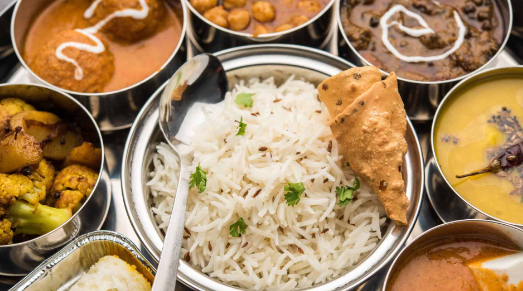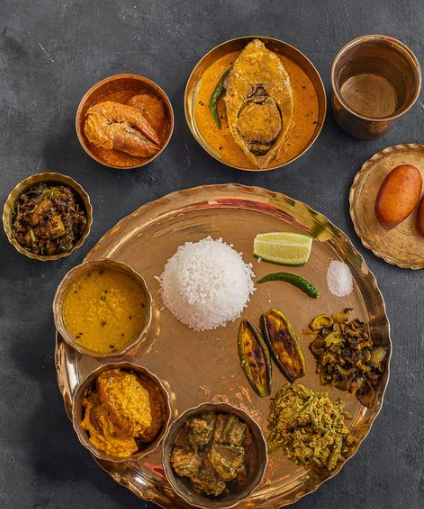From Bengal to across the globe: ‘Bhaat ghum’ or afternoon siesta is a naptime revolution we didn’t know we needed
Ever wished you could hit the snooze button after lunch? And did you know that a quick snooze can supercharge your brain like a phone charger for your noggin?
While in India the concept may not be very popular, except in West Bengal where it is called ‘bhaat ghum (a nap after eating rice)’, in the Mediterranean, you’ll find the ‘siesta’ to be a tradition in countries like Spain, Italy and Greece.

‘Bhaat ghum’ is not just an afternoon snooze, in fact, it is a blissful coma induced by a plate of soul-satisfying khichdi or a comforting bowl of dal bhaat (rice and pulses).
And guess what? The age-old tradition of a four-hour break lives on even today in West Bengal, giving workers the perfect excuse for an afternoon siesta. So, if you see shops closing in West Bengal around midday, it’s not laziness – it’s a nod to history!

Delving deeper into the science behind these post-meal naps, in conversation with indianexpress.com, psychologist Dr Srikanth Srinivasan, Chief Medical Director, Niyama Digital Healthcare, revealed the benefits. He said, an afternoon siesta helps in improved mood, enhanced cognitive function and reduced stress levels.
He further highlighted the global presence of this practice, citing the popularity of the afternoon ‘siesta’ in Spain, believed to have spread to Latin America, Asia and Africa. He emphasised, “Given this long-established practice of an afternoon nap in the Indian subcontinent, it is unlikely to face any major cultural obstacle towards the dissemination of its health benefits.”
“Short naps of anywhere between 20 and 30 minutes taken between 3 pm and 5 pm (when there is a circadian dip in the body’s alertness) have been shown to maintain day time arousal levels and enhance performance across all age groups. Post lunch sleepiness occurs regardless of whether lunch is consumed or not,” Dr Srinivasan said.
He added, “A decline in arousal in the afternoon could thus be considered to be a part of a biological rhythm. On the other hand, in older populations, as opposed to the obvious benefits of a midday nap outlined above, excessive napping has been linked with negative outcomes.”
He also mentioned that napping is actually better than caffeine for staying alert. “Naps have been shown to help with learning new things, remembering stuff better, boosting mood and even improving heart health by lowering the risk of high blood pressure, diabetes and obesity. They also help lower stress and boost your immune system,” Dr Srinivasan said.

Dr Srinivasan said there is a negative aura surrounding after-meal naps and misinformation about how napping after lunch is a big obstacle to overcome. “Providing correct information and the self-agency to individuals to choose their work patterns – continuous shift or a pattern with a break built-in for a post-lunch nap — would be the right approach to promote this,” he said.
“Taking daytime naps is common in many cultures in tropical and semitropical climates, where afternoon temperatures often climb considerably. As an example, the ancient Ayurvedic physician Charaka, in his treatise ‘Charaka’, offered specific recommendations for daytime naps tailored to individuals of different body types,” Dr Srinivasan said.
Addressing the challenge of integrating ‘bhaat ghum’ into modern work-life balance, Dr. Srinivasan offered practical suggestions. He said, “With the increasing popularity of work-from-home arrangements, encouraging institutions to designate protected nap times after lunch could be a valuable step. Even in traditional office settings, simply allowing employees to rest their heads on their desks and close their eyes without fear of judgment could make a significant difference.”
Sociologist Prateeti Rajak, bachelor’s degree holder in Sociology from Jamia Millia Islamia with a Masters in interdisciplinary humanities and social sciences from IIT Gandhinagar, said, “From fostering a sense of community to prioritising well-being over productivity, post-meal naps serve as a reminder to slow down and savour life’s simple pleasures.”
Being a Bengali herself, currently working with The Desai Foundation Trust as a Project Executive, Rajak draws parallels from her own experiences. “The idea is to take a good one-hour nap to enhance working abilities and rejuvenate on a hot humid day. It not only refreshes one but gives the energy to continue with one’s daily routine.”
Rajak added, “Usually it would be our mothers telling us to take a nap in the afternoon after returning from school and having lunch. This actually helped us grow into healthier children, feel less anxious and remove stress.”
Lamenting that she misses her mid-afternoon naps, Rajak said, “Now, work pressure, caffeine fixes and glowing screens keep us chained to our desks. Forget unwinding, even the afternoon sun feels like a judgment when you’re stuck in an air-conditioned cubicle. Sleep? Most nights are a blur of catching up on what we missed while we were productive.”

Rajak acknowledged the limitations and said, “After a traditional lunch not all people can afford to listen to their heart and take a bhaat ghum. Househelps, working-class individuals and others are driven by the need to provide for their families.”
She lamented the decline of this practice across generations, attributing it to the “hyper-achieving mindset” that prioritises work and additional activities, leaving little time for rest, even for children whose parents strive to offer a better life.
Rajak’s research has revealed that communities like Marathis, Gujaratis and even the Japanese embrace this rejuvenating habit. Integrating similar practices into modern work cultures, akin to the Japanese model, could empower individuals to embrace a slower pace, recharge for the afternoon and potentially experience positive benefits.
She added especially considering the increasing challenges posed by climate change and regional hardships, that this seemingly leisurely activity of taking a post-meal afternoon nap holds the potential to enhance both work output and our socio-emotional well-being.
Dietician Qudshiya Motiwala Imtiyaz, Nutrition Consultant, told indianexpress.com, “A balanced and mindful diet is always preferable. Our ancestors had scripted that one should eat only till his 75-80 per cent capacity or else it will invite unnecessary ailments to the body.”
“After a meal is done, our body releases serotonin enzymes which makes the body sleepy or drowsy. No one has the potential to work when they sleep. Their performance scale declines. So, if a nap or sleep is taken, we get fresh and can perform better in our tasks,” Imtiyaz said.
When asked what’s the best way for modern individuals who are handling 9 am to 5 pm jobs, Imtiyaz said, “Modern individuals should have healthy meals and consume it mindfully by keeping their culture and traditional food alive.”
From the top of her head, she mentioned the balanced diet one can take if they choose to have an afternoon nap could include fish and rice, dal and rice and ghee, dal baati, litti chokha or idli-sambar.

“All cuisines have healthy tasty traditional food in their menu, so modern individuals can pick up and have that. It will help them to keep the tradition alive plus their body acceptability of that food item will increase as that food item has been consumed by their parents and grandparents so it’s in their blood and roots,” she said.
As advice, Imtiyaz said, “One should not eat in a hurry. Food is a blessing one should have with a peaceful mind and body. Sitting on the floor with crossed legs in front or crossed legs on the right hand side is our traditional method to consume food. This helps one to have control on their food intake. If these traditional ways are not followed or practised by modern individuals, they might be caught up with some illness or may have low immune response to any kind of sickness.”
Disclaimer: The copyright of this article belongs to the original author. Reposting this article is solely for the purpose of information dissemination and does not constitute any investment advice. If there is any infringement, please contact us immediately. We will make corrections or deletions as necessary. Thank you.





